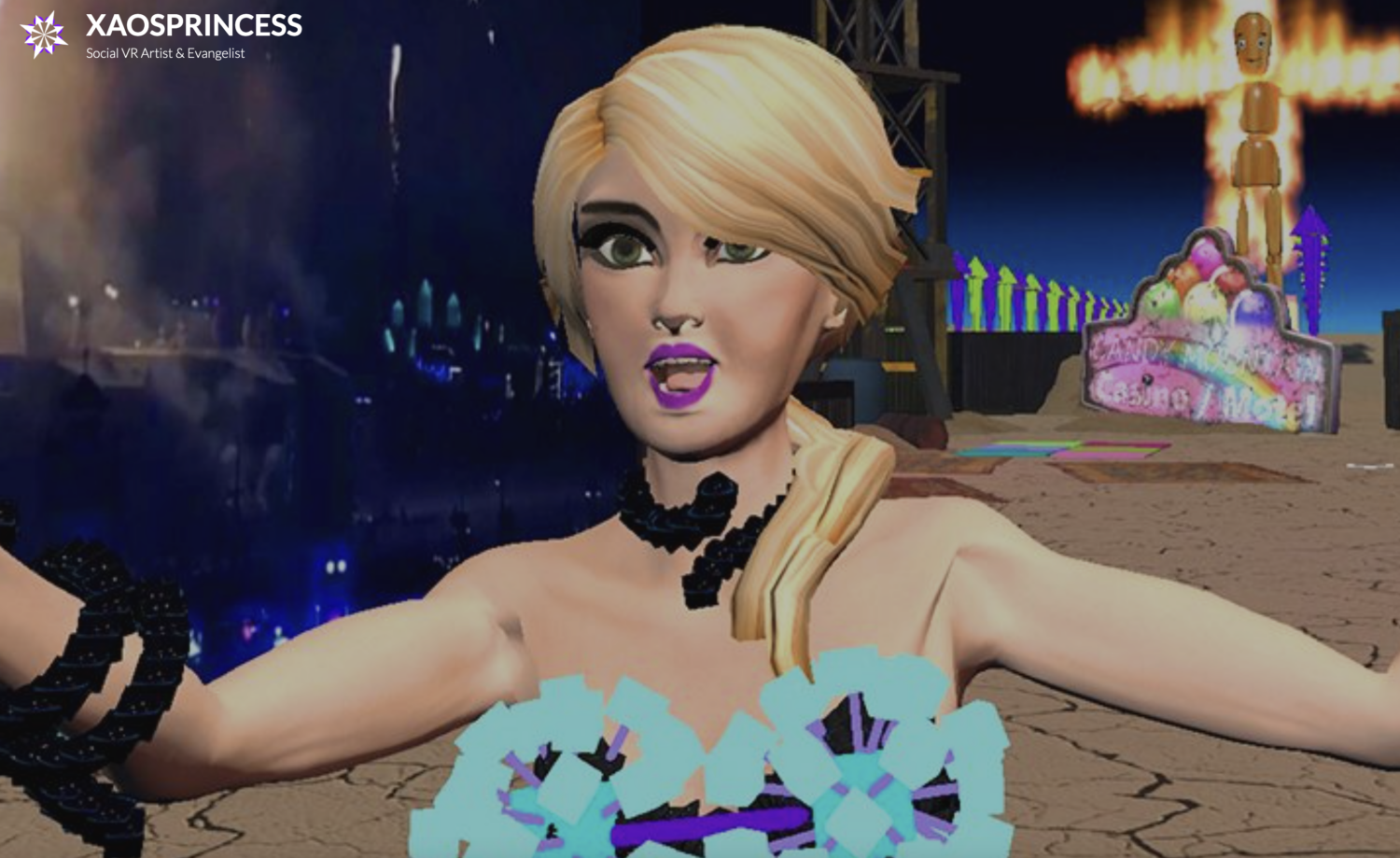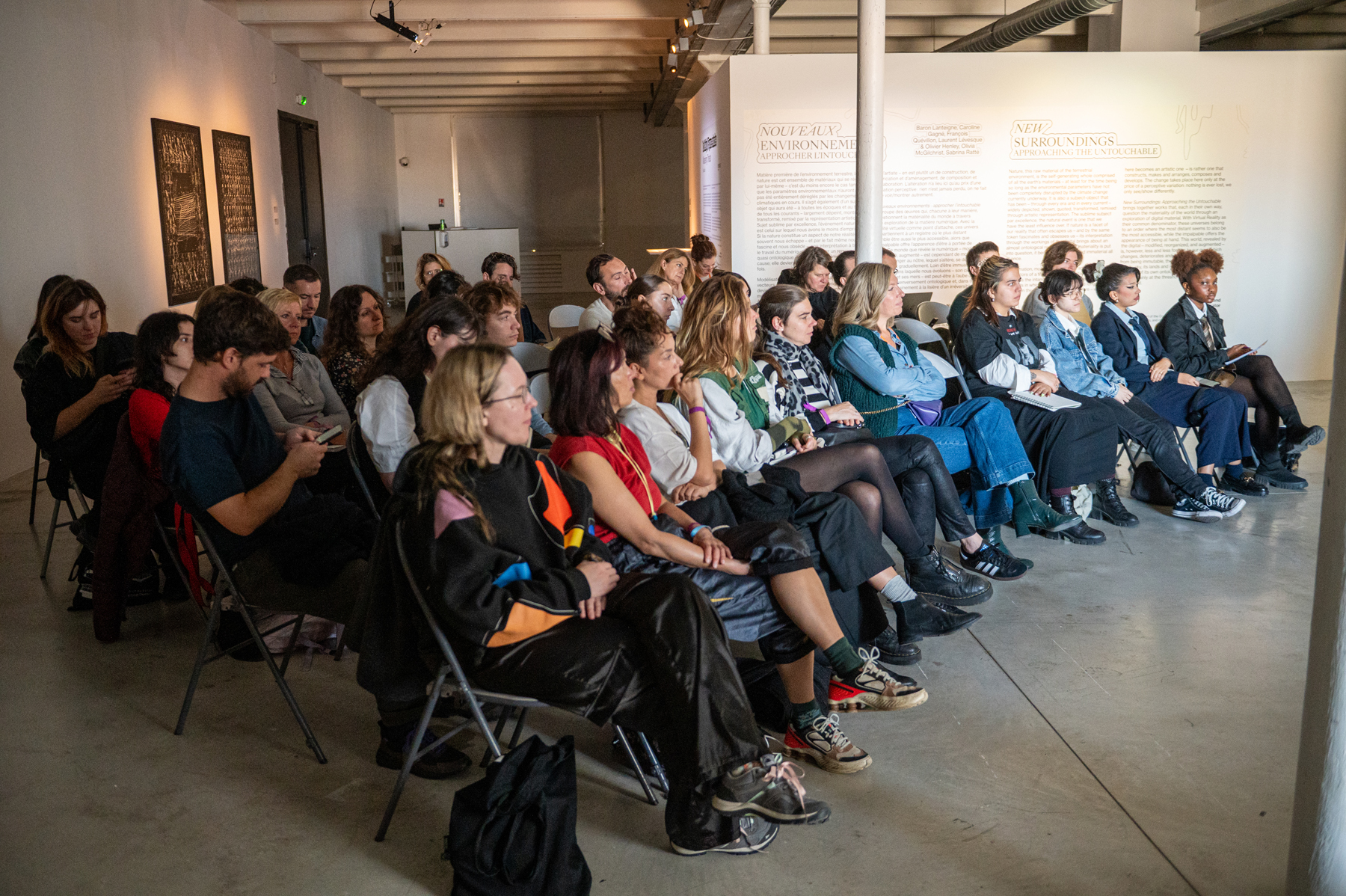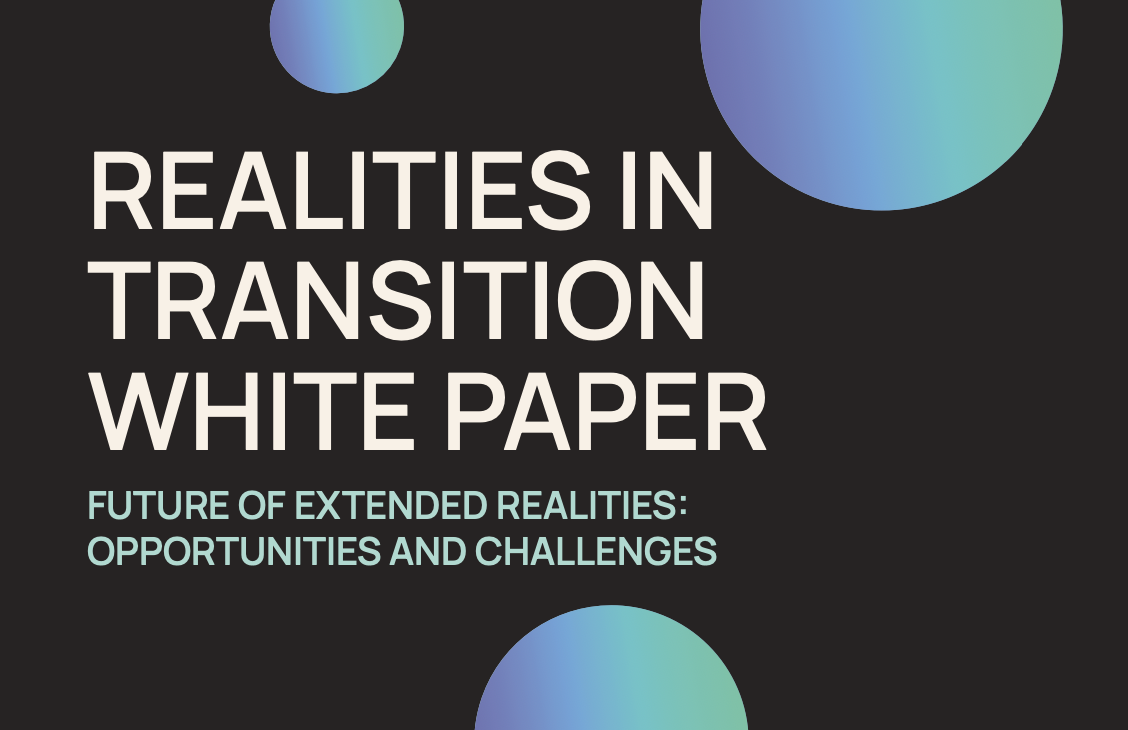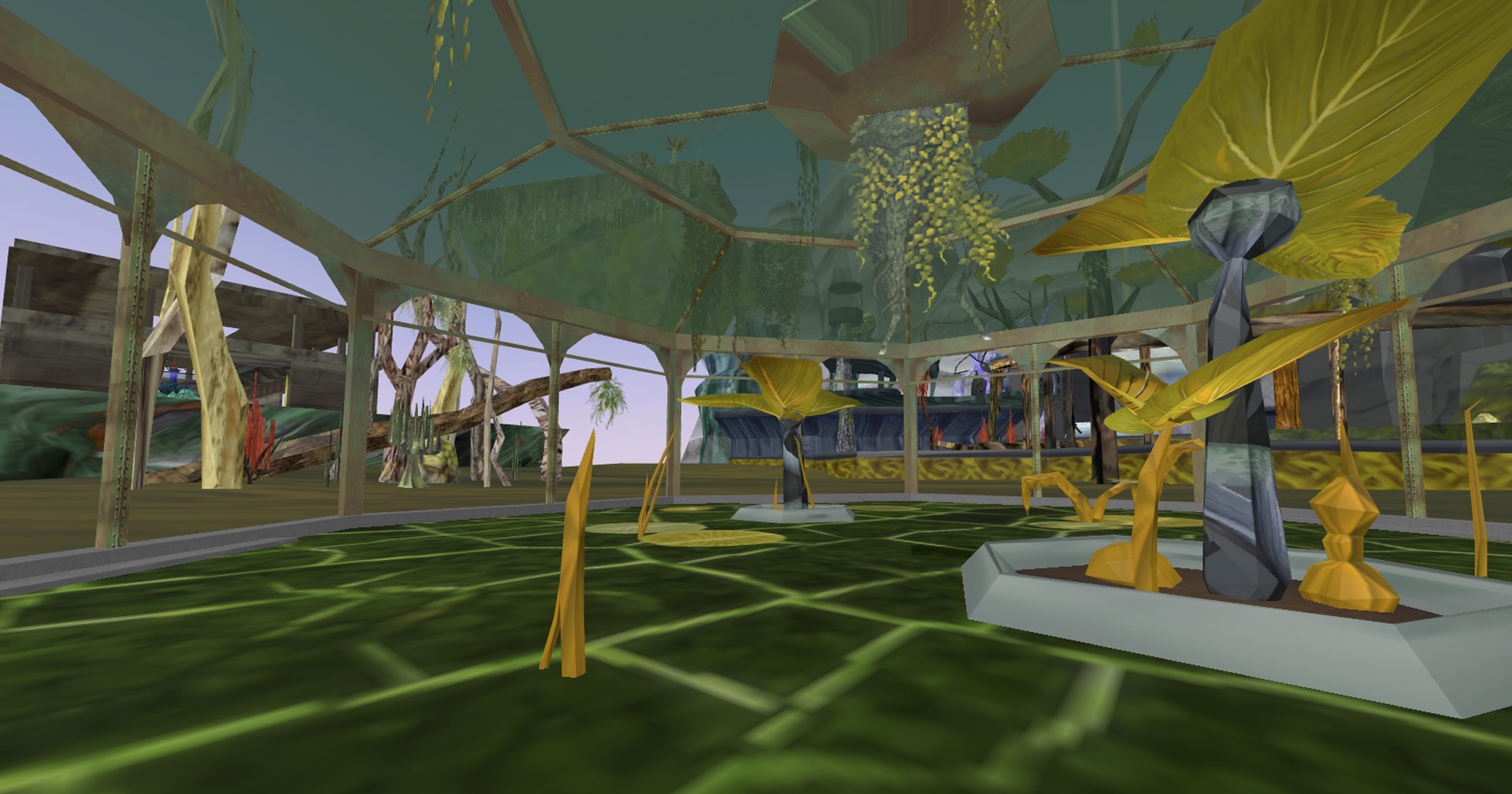Reclaiming Chaos: An Interview with Christina XaosPrincess
“That’s the great thing about the XR community, that they’re so helpful and so collaborative (…).”
[OUT OF THE BOX] Christina Xaos Princess was invited as part of the first Realities In Transition XR Camp, which took part in our partner’s venue in Zagreb: Kontejner. Dark Euphoria asked her about her relationship to XR, her personal journey through it and her favorite tools+inspirations…
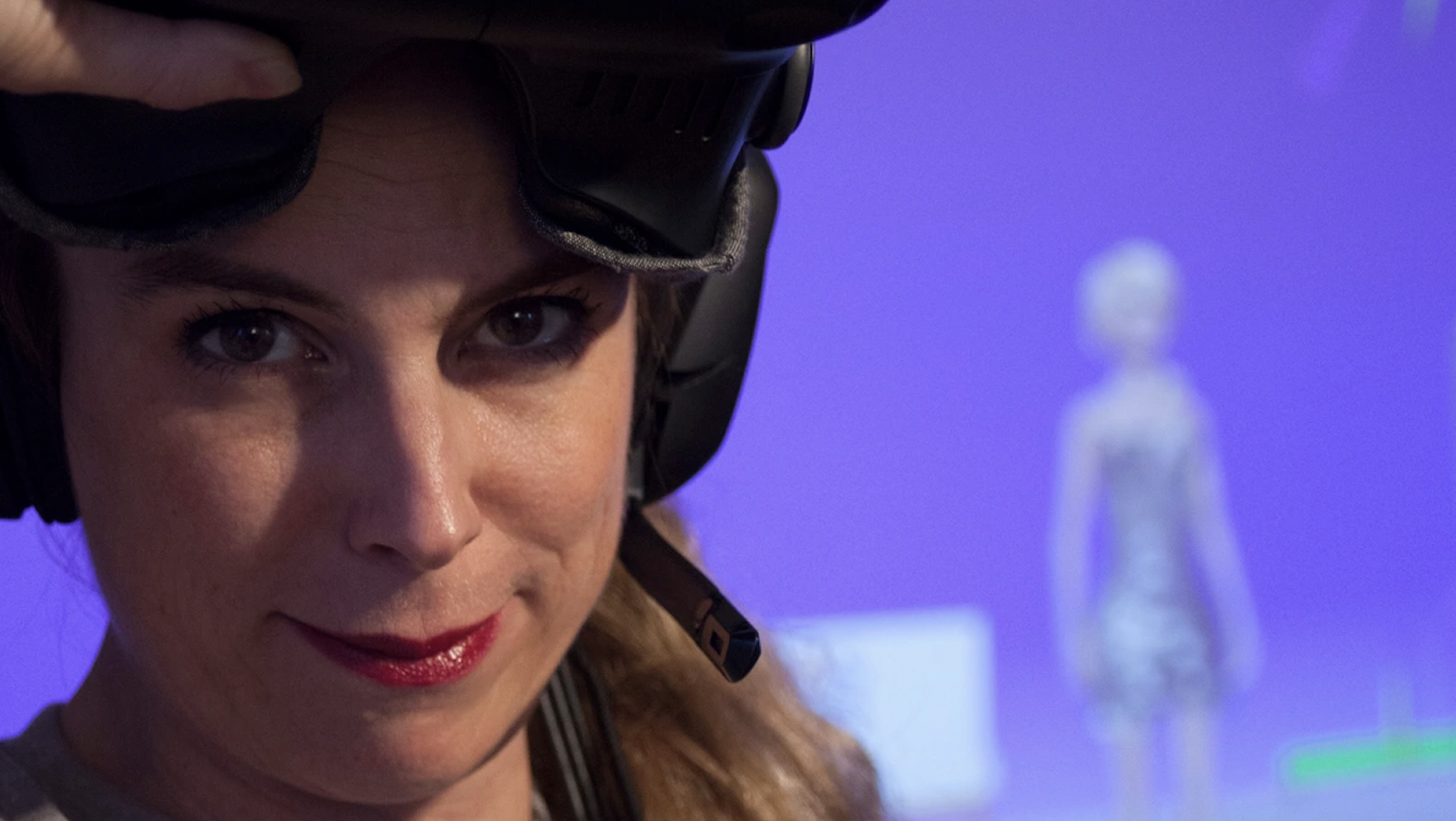
Dark Euphoria | Interviewer: Marie Point
Hello Christina! First of all, can you introduce yourself?
Christina: Hello. Thanks so much for having me. My real life name is Christina Kinne. And in VR and on all online social platforms, I’m called “XaosPrincess”. I’m a social VR content creator and evangelist and currently I have a project called Quantum Bar, which serves engaging AI conversations in social VR. So you can have a face to face naturalistic conversation with a GPT chatbot on any platform which supports audio chat.
In the first half of my life, I’ve been a filmmaker and with a degree from Munich Film School, and then I entered Social VR in 2016 and afterwards also picked up studies again. Now I also have a master of arts for which Quantum Bar was my thesis project. I was also a CMO and events manager for a social VR platform called Tivoli Cloud VR until 2022. And since then, I’m mainly taking care of Quantum Bar. I hope to expand it to an educational platform which enables decision makers and politicians and students to learn about AI through interaction with it. And I also do teaching at universities about VR and consulting for virtual events of all kinds.
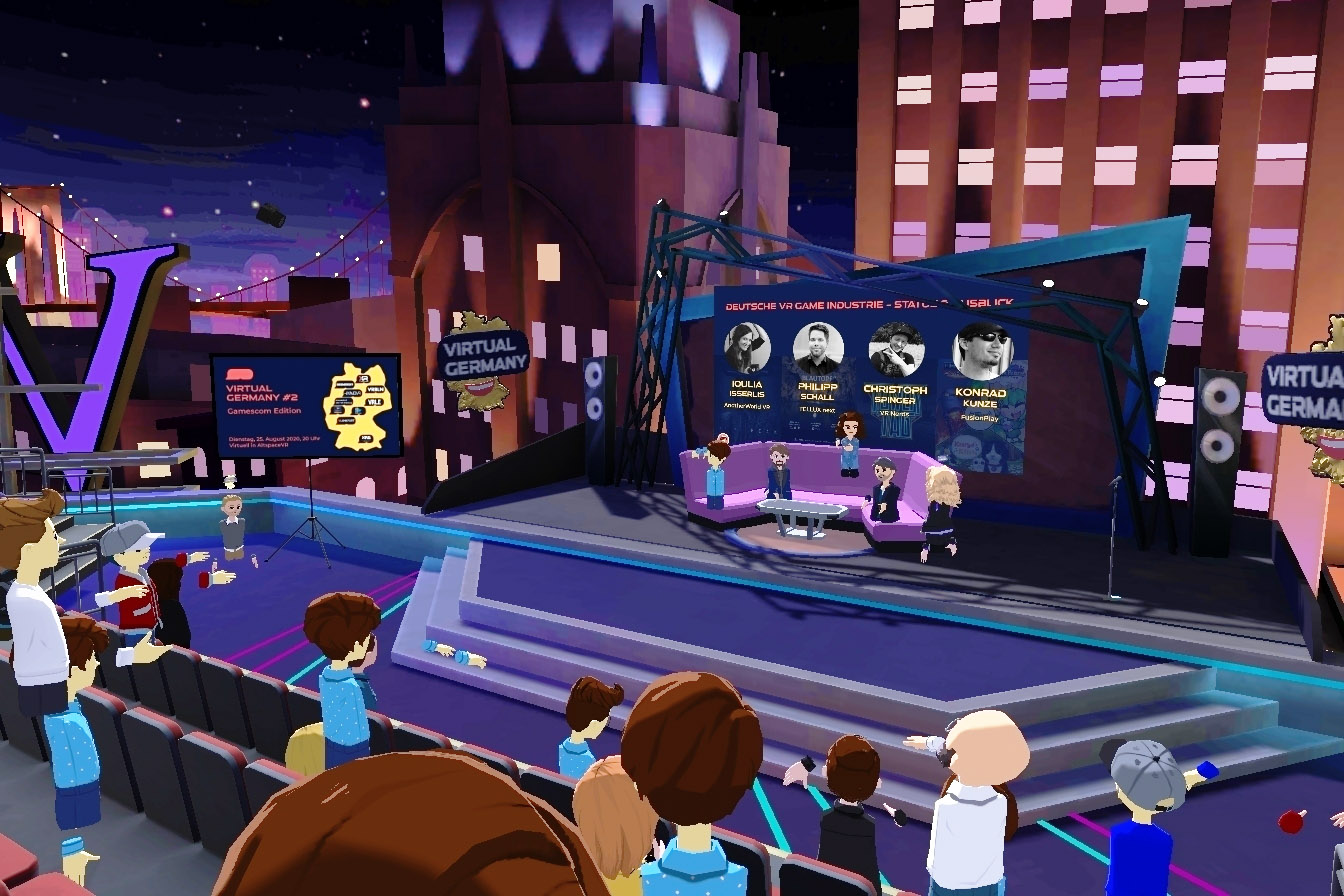
Marie Point / Interviewer: You said you had a degree in filmmaking, but how did you meet XR? What brought you there?
Christina: I was dreaming about XR ever since I read William Gibson’s Neuromancer in the 1990s. There he describes a world where you can go online as avatars, and where the protagonist talks to his old mentor as an AI. I was always dreaming of being able to use this technology to expand it into my reality, but I never would have thought that I would live to see it.
Therefore, my first pick of studies was filmmaking, ’cause back in the days that was the art form which combined all kind of arts and also was working with technology. Then, in the middle of the 2010th, I had two wonderful daughters, still have them – so my social and professional life came to a halt (…) Nobody calls you back when you can’t act spontaneously on your pop invitations. So I was incredibly happy when in 2016, the first consumer headsets were released and we got the HTC Vive. Furthermore, I was so lucky to find High Fidelity, which was Philip Rosedale’s social VR platform; basically a successor of Second Life but in VR and that solved all my problems and fulfilled all my dreams.For once I socialized, going out, staying in, without leaving the house, and still being able to hear if my kids need me, I could put on the headset and socialize with friends from all over the world. That was so wonderful. That’s the great thing about the XR community, that they’re so helpful and so collaborative and so I learned a big deal of how to 3D-build, how to use the technology just on High Fidelity – by asking experts of certain fields or just by exchanging knowledge. This was also a motivation for my second study. I wanted to have the framework and the proper wording, the proper termini technici, to deal also with software production in order to set up bigger, more extensive works in the VR space.
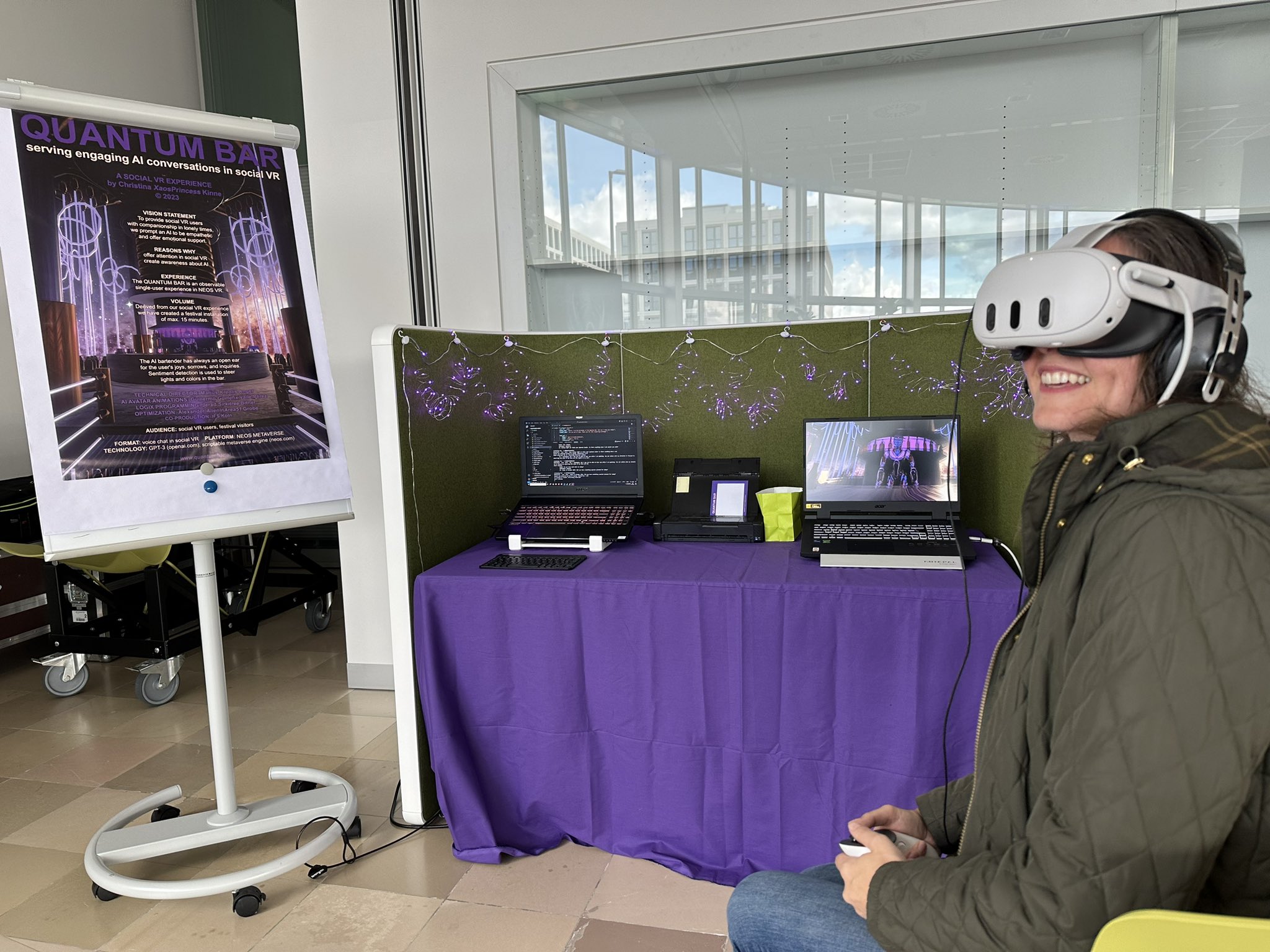
Marie: Could you tell me what are your favorite tools with XR? What you enjoy working with?
Christina: My main skill is of course narrative, that comes from film. But also I love 3D building and I love to always start within VR itself, using TiltBrush or Gravity Sketch is my favorite “Photoshop for VR” program. Because when designing in VR, you have the advantage of the immediate evaluation: if you first do something in Blender, then bring it into VR and then look at it with a headset, you suddenly realize “oh, too high, too big to read, too… whatever”. And that’s the huge advantage by doing the core design and also going back working with your hands actually in VR itself and then export the models and take them into Blender and optimize them there and do the texturing. In addition, I also love the various building methods provided by the various platforms. At the end of the spectrum you have for example “Mozilla Hubs” who offer an easy to use editor called Spoke – basically Unity light and that works on the web. This gives you a toolbox but it’s also open source so you can also do more complicated work with it, but that one is totally for free usable on anything which is connected to the internet and gives you a first feel of how to design, how to move stuff, how to make stuff bigger… And on the other hand, there is this platform we used as a showcase platform for Quantum Bar, “Neos Metaverse”, or their successor now “Resonite” who offer amazing Unity-like building tools, but within VR. So when we built the Quantum Bar, we would have building sessions twice a week. While the coding team members would do the visual scripting, I would do the 3D building and that had fantastic other advantages because it’s much more motivating to meet up together and to actually be in the same space while you’re building the space with your developers. And also it gives you shorter evaluation times because you don’t have to upload a whole Unity build just to check if the flower is purple enough but you can immediately say “Oh, give me more purple!” And so I’m really a big fan of this collaborative building ideas of the Resonite digital universe.
Marie: What kind of resources did you use to find your way?
Christina: Starting off with the design approach I recommend everybody to read Janet Murray’s Hamlet on the Holodeck. It’s a ground work written in the 1990s about immersive design and game design. This can be really taken as a recipe for creating a great and immersive working virtual experience.
To build it, you can use either simpler tools or more complicated ones like Unity or Unreal. But this book tells you what’s the golden cut of immersive design. You always need some ground rules when designing independent of the technology you are using. Then in general to learn about the newest XR & AI technologies, I also have been and kind of still am a big fan of Twitter. It isn’t as evil as you think. If you create the right bubbles, and since on Twitter the aim is to be the first to release a cool new story or research finding, it’s always the first place where you write or hear about new headsets, new algorithms, new programs, and it’s also a good place to create your own reach and intermingling with this bubble. I still use Twitter as it’s like the main newspaper.
Then there are really nice blogs that I love regarding the metaverse. For once you have Wagner James Au, who started off as an in-world reporter on Second Life and now has expanded his blog “New World Notes” talking about any new development or what’s happening with social VR or social online platforms. And then also a great blog is by Ryan Schultz. He’s an academic librarian in real life, but he also was starting from Second Life and then expanding to all kinds of metaverse platforms… He posts on a weekly basis reports of what’s happening on what platform.
And last but not least, I’m a member of and big fan of the XR-Guild that was founded by Avi Bar-Zeev and other metaverse players. They also put out a manifesto of 12 rules “how to create a good metaverse”, like it should be decentralized, interoperable, not ruled by only one company. So we dove into the ethics there and they also are currently building a knowledge base about metaverse like ethical, philosophical and technical topics.
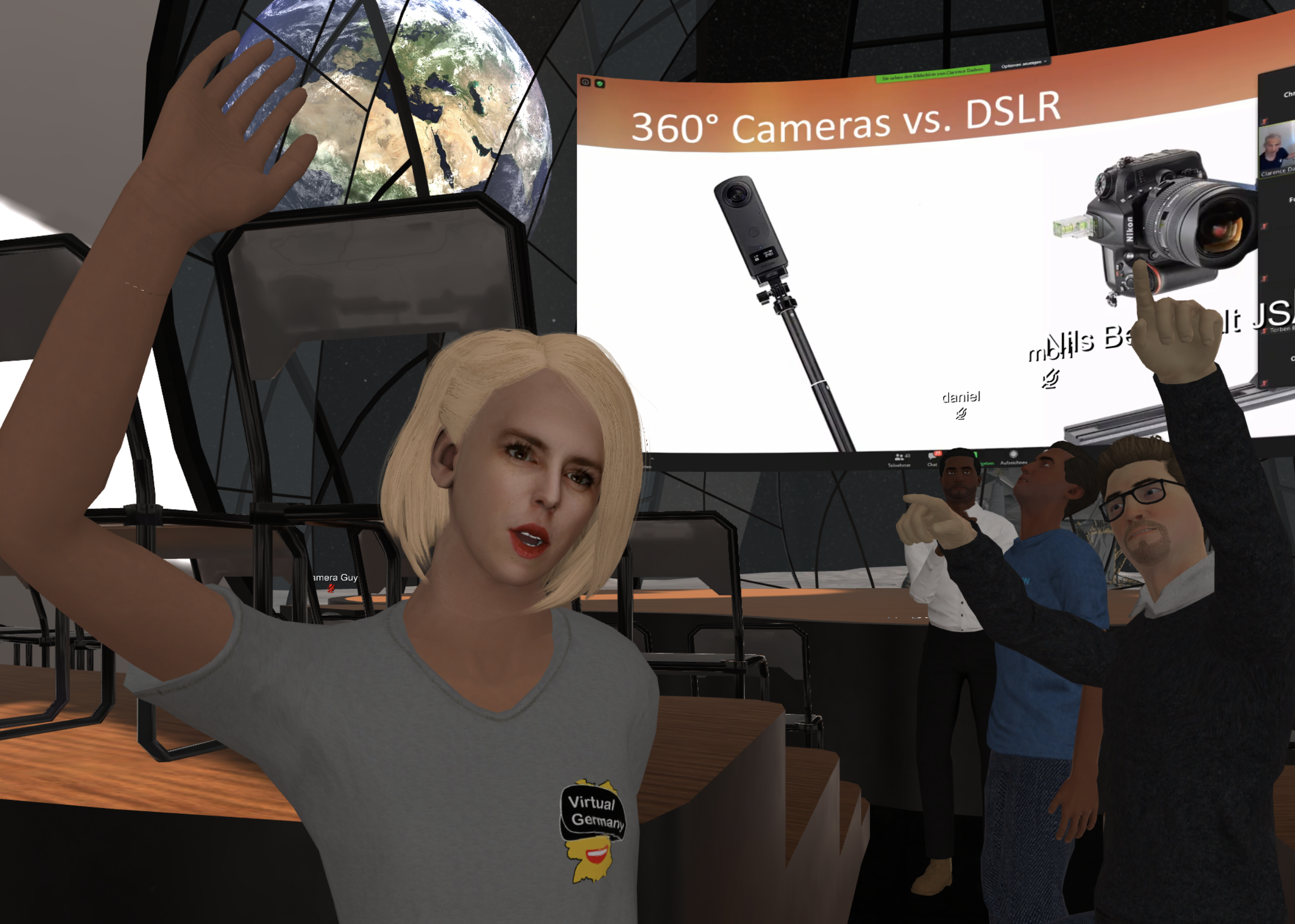
Marie: Talking about more philosophical and ethical topics: where do you see XR heading now and where would you want it to be headed in the future?
Christina: The journey of XR is a really wild-wide world. Until 2015, I wouldn’t live to see it. Then 2016-17, everybody was super optimistic. If you would have asked me that question in 2016, I would have said: “By 2020, everybody owns a VR headset, and everybody has their second additional reality in VR”. But then the curve went down and it was like this metaverse hype created by the Facebook rebranding, which was very counter-productive for the space because so much vapor ware was released under the name Metaverse that it got a bad reputation in the eyes of folks actually really working in the metaverse. So we had for example the problem with Tivoli Cloud VR that we had in our tagline, “we’re building a friendly and inclusive metaverse for everyone”. And we had that since late 2019 in our tagline and then people told us, “Oh, with your software you’re just jumping on the hype train”. That was rather frustrating.
I think at the current moment we are in a consolidation phase. There are real use cases, real applications, especially in the educational, the training, and the medical space. But you can see here at the wonderful Kontejner XR Camp or at the L.E.V. Festival, it’s being picked up by the arts. Of course games are happening in VR. Schools are having VR seminars. So it’s an okay business now. But my big hope in terms of where it’s going is actually that the Apple Vision Pro will have a similar effect as the iPhone. Back then the iPhone was like “why do I need my phone to go on the Internet? What can I do with it?” And you were like “Oh, okay, I can find a restaurant”. And now nobody can live without their smartphone. And so after the super expensive 3,000 dollar plus initial model, I hope that they release something affordable and that this brings a more massive adoption and maybe also gets in other target groups… Maybe someone will just buy it because they also bought the Apple Watch and they also bought the iPad and that those folks who are rather the Apple fans then realize what VR and AR spaces can be. And then hopefully this fires back to the community, – facilitating mass adoption.
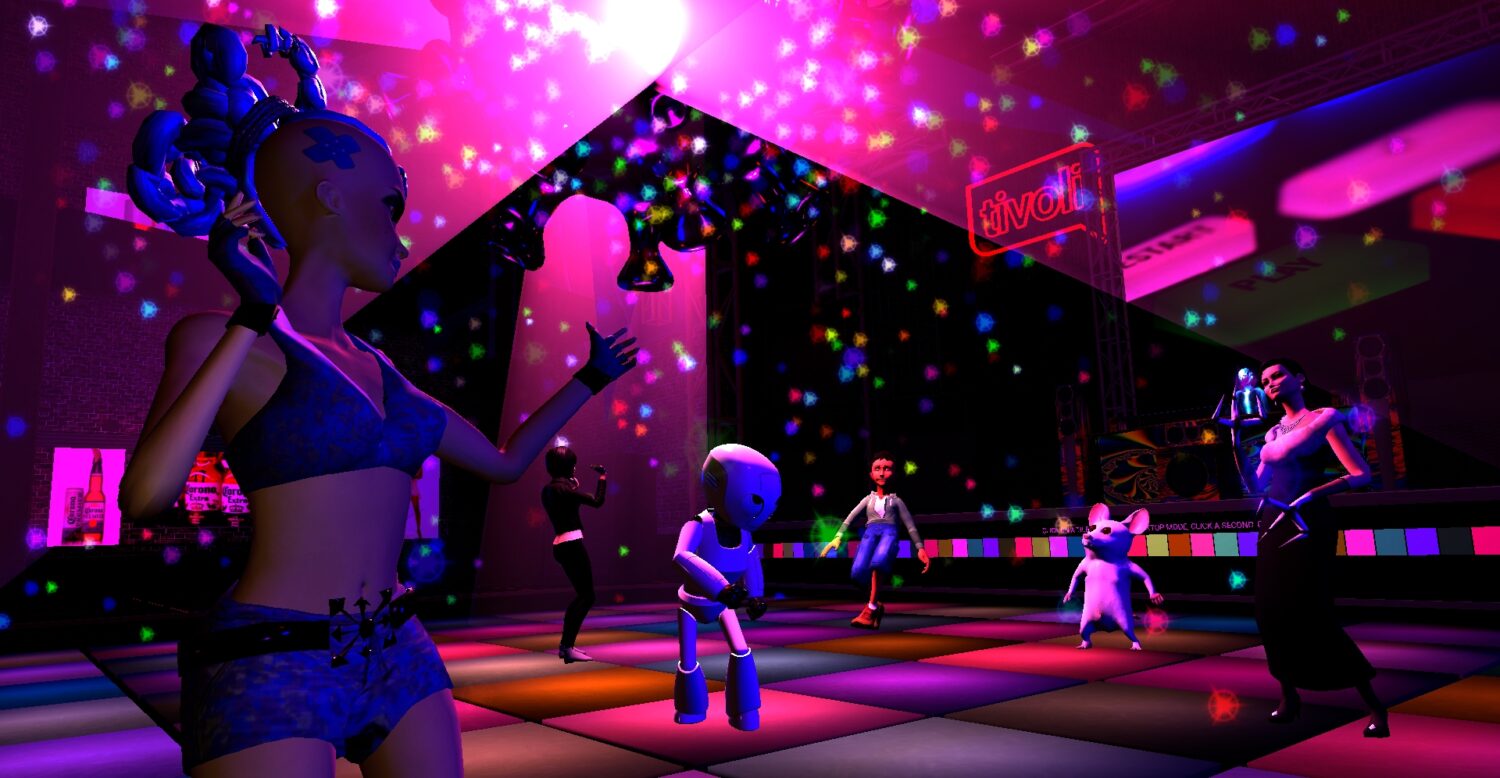
Marie: To end up, what advice could you give to an artist who would start creating or experimenting with XR from your own experience and practice?
Christina: Number one, get a headset, get active. Play, download art experiences, find what works for you, what job do you like, what would you want to create? But first, experience the art itself. Then, my big recommendation is to go to conventions and festivals like here the XR Camp or L.E.V. or Laval Virtual or VRDays because the community is really such a wonderful and welcoming community. They’re so helpful and the exchange of ideas is still so much supported. So, go to the festivals, speak to the exhibitors, do networking there.
And then, I’d start small. I’d recommend to anybody to find a social VR platform which you like. There is a whole variety out there. From Mozilla Hubs which works on stand alone headsets and even mobile phones, to Resonite for which you need a PC/ VR set-up. All these platforms have communities and also collaborative building/teaching-evenings and experts who can tell you how they brought in their photogrammetry model or such. This is a great place to gain knowledge from your own home. And then maybe if you don’t have experience in the technological space yet, start with a simple tool like the Spoke Editor by Mozilla Hubs and don’t start doing like the whole Louvre. Start with a small piece, a small room, an island. Whatever you like without the pressure of having to exhibit, to having to distribute it right at once, just as a practice object. And then you can also see where your skills are and where you need collaborators and then you can level up to Unity or Unreal and then if you create some little pieces for yourself and if you know what kind of talent you need, you can finally level up and do like a project-lead who gathers a team. But also if working with a team, it’s super important to know what you ask of the team.
Marie: Thank you so much Christina.
